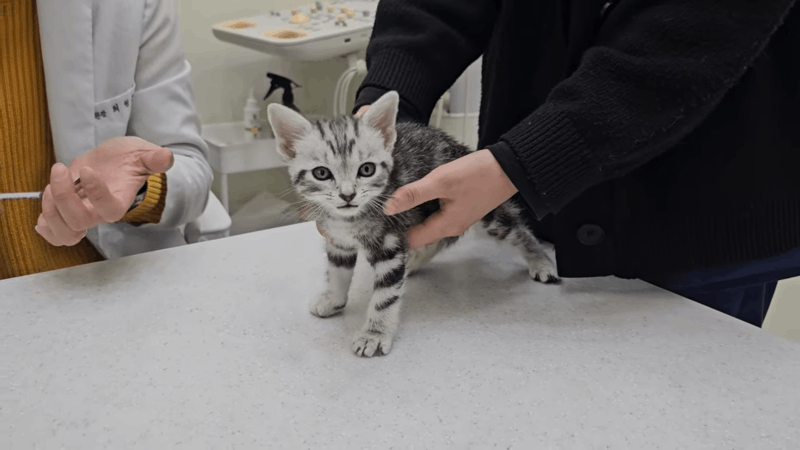No products in the cart.
Lyme disease in cats, though less common than in dogs, is a serious tick-borne illness that pet owners should be aware of. Caused by the bacteria Borrelia burgdorferi, Lyme disease can lead to many health complications if treatment is not received.
To protect your cats from this health condition, everything about Lyme disease in cats will be covered in this blog, including how to spot the symptoms, the best treatment approaches, and effective ways to prevent infection.
Understanding the Basics of Lyme Disease in Cats

Lyme disease in cats is a bacterial infection transmitted primarily through the bite of infected ticks, specifically those from the Ixodes species, also known as deer ticks. Compared to dogs, this health condition in cats is less common, however, it still remains a serious health danger. Borrelia burgdorferi is the main factor causing this disorder. To keep feline companions safe and healthy, understanding the early signs and prevention methods is crucial.
Can Cats Get Lyme Disease?
Cats are typically exposed to Lyme disease through the bite of an infected tick. Due to their grooming habits, cats may be less likely to have a tick remain on them long enough to transmit the disease, but it is still possible for them to contract it if exposed.
Symptoms of Lyme Disease in Cats
Cats with Lyme disease can exhibit a variety of symptoms, some of which may be mild and hard to spot. Unlike dogs, cats often display less obvious signs so it is more challenging to diagnose. Here are some symptoms of cat lyme disease:
- Fever: Cats may develop a mild to high fever as their body responds to the infection.
- Lethargy: Infected cats often show a noticeable decrease in energy, appearing more tired and less playful than usual.
- Joint pain and lameness: This may be intermittent and can shift from one limb to another. Cats may exhibit discomfort when moving, reluctance to jump, or even limping.
- Swollen joints or lymph nodes: The areas near the joints or lymph nodes might become swollen and tender to touch, indicating an inflammatory response.
- Loss of appetite: As with many illnesses, a decrease in appetite may occur, which can lead to weight loss if not addressed.
- Difficulty breathing: In severe cases, if the infection affects the heart or lungs, cats might show signs of respiratory distress.
- Kidney problems: Although rare, Lyme disease can lead to kidney issues in cats, presenting as increased drinking and urination, vomiting, weight loss, and lethargy. This condition is potentially life-threatening and requires immediate veterinary attention.
Causes of Lyme Disease in Cats
The bacteria Borrelia burgdorferi can be transmitted to cats through the bite of infected ticks and it is also the main cause of Lyme disease. Here’s a detailed look at the causes:
- Infected ticks: The primary vector for Lyme disease cats is the Ixodes species of ticks, commonly known as deer ticks or black-legged ticks. Particularly in the northeastern, mid-Atlantic, and north-central regions of the United States as well as in some areas along the Pacific coast, these ticks are more common in some geographic locations.
- Tick attachment: For transmission of the bacteria to occur, the tick generally needs to be attached to the cat for at least 24 to 48 hours. Cats’ frequent grooming habits often remove ticks before they can transmit the bacteria, but not always.
- Environmental exposure: Cats that spend time outdoors, especially in wooded, grassy, or brush-heavy areas, are at a higher risk of encountering ticks that may carry Lyme disease.
- Seasonal risk: The risk of infection is higher during the late spring and summer months when ticks are most active. However, in warmer climates, ticks may be active year-round.
Crucial measures in preventing Lyme disease include examining your cat’s coat after being outside and using tick control drugs on a regular basis to prevent tick bites. Getting a proper diagnosis and treatment plan from a veterinarian is so important if you think your cat is showing symptoms of Lyme disease.
Can Cats Transmit Lyme Disease to Humans?

Cats cannot directly transmit Lyme disease to humans. Lyme disease is spread through the bite of infected black-legged ticks, not from cat to human. It’s important to note that Lyme disease transmission occurs through tick bites, so the presence of ticks is the actual concern.
To minimize this risk, regularly check your cat for ticks, especially after they have been outdoors, and use tick prevention products. Tick-borne disease risk can also be decreased by keeping your yard and house clean and free of ticks.
How to Treat Lyme Disease in Cats?

To ensure the health and well-being of your feline friend, a careful and systematic approach is required when treating Lyme disease in cats. Here is a detailed process that we can consider:
- Identify symptoms: Watch for signs of Lyme disease in cats, such as lethargy, fever, lameness, swollen joints and loss of appetite.
- Visit the veterinarian: If you suspect Lyme disease, take your cat to the vet for a proper diagnosis. The veterinary professional will do a physical assessment and might suggest blood testing to verify the existence of the Borrelia burgdorferi bacterium.
- Administer antibiotics: The primary treatment for Lyme disease in cats is antibiotics. The most commonly prescribed antibiotics are doxycycline or amoxicillin. Follow the vet’s instructions for dosage and duration.
- Manage symptoms: In addition to antibiotics, the vet may recommend anti-inflammatory medications to manage pain and swelling. Ensure your cat gets plenty of rest and stays hydrated.
- Monitor progress: Regularly check in with your vet to monitor your cat’s response to treatment. Follow-up appointments might be required to make sure the infection is fully cleared.
- Prevent future infections: Use tick prevention products recommended by your vet, and regularly check your cat for ticks, especially if they go outdoors.
Lyme disease in your cats can be prevented and treated effectively by following these steps diligently. To ensure your cat’s health and safety, early detection, proper medical care, and preventive measures are necessary.
Medication for Lyme Disease
When treating Lyme disease in cats, it is crucial to follow a veterinarian’s prescribed medication regimen. Here is the most commonly used medications:
- Doxycycline: In treating Lyme disease in cats, this is a broad-spectrum antibiotic and the most commonly prescribed medication. When it comes to the Borrelia burgdorferi bacteria that causes Lyme disease in cats, it works really well.
- Amoxicillin: This is a penicillin-type antibiotic that is also effective against Lyme disease. For cats that are unable to tolerate doxycycline, this is an other option.
- Anti-inflammatory drugs: Anti-inflammatory drugs are used to manage pain and reduce swelling associated with Lyme disease. The cat’s comfort and mobility can be improved during recovery by these medications.
When looking for an effective treatment of Lyme disease in cats, these medications are recommended. Always follow your veterinarian’s instructions for dosage and administration, and monitor your cat for any adverse reactions. A complete recovery depends on receiving treatment early and often.
Is Lyme Disease Curable in Cats?
Lyme disease in cats is generally treatable and curable if caught early. The primary treatment can effectively eliminate the infection as it involves antibiotics. However, if Lyme disease in cats can not be treated, it can cause long-term health issues. For a complete recovery, an early diagnosis and timely treatment are essential.
CBD for Lyme Disease: Is This an Effective Treatment?
CBD is not a primary treatment for Lyme disease in cats. While it may help alleviate some symptoms such as pain and inflammation due to its anti-inflammatory properties, it should not replace conventional treatment with antibiotics. Always consult with a veterinarian before using CBD or any alternative treatments to ensure the safety and well-being of your cat.
Conclusion
Lyme disease in cats is not as common as dogs, however, it’s a serious health risk that we should pay attention to. To protect your cat, early symptom recognition, prompt veterinary treatment, and effective preventive measures should be considered. A little awareness and proactive care can go a long way in safeguarding your pet against Lyme disease.
Hello, I am Hazel Bennett, an experienced copywriter specializing in the fascinating topic of CBD for dogs. With a passion for pet wellness and extensive knowledge of CBD’s potential benefits, I am here to provide you with informative and engaging content.



